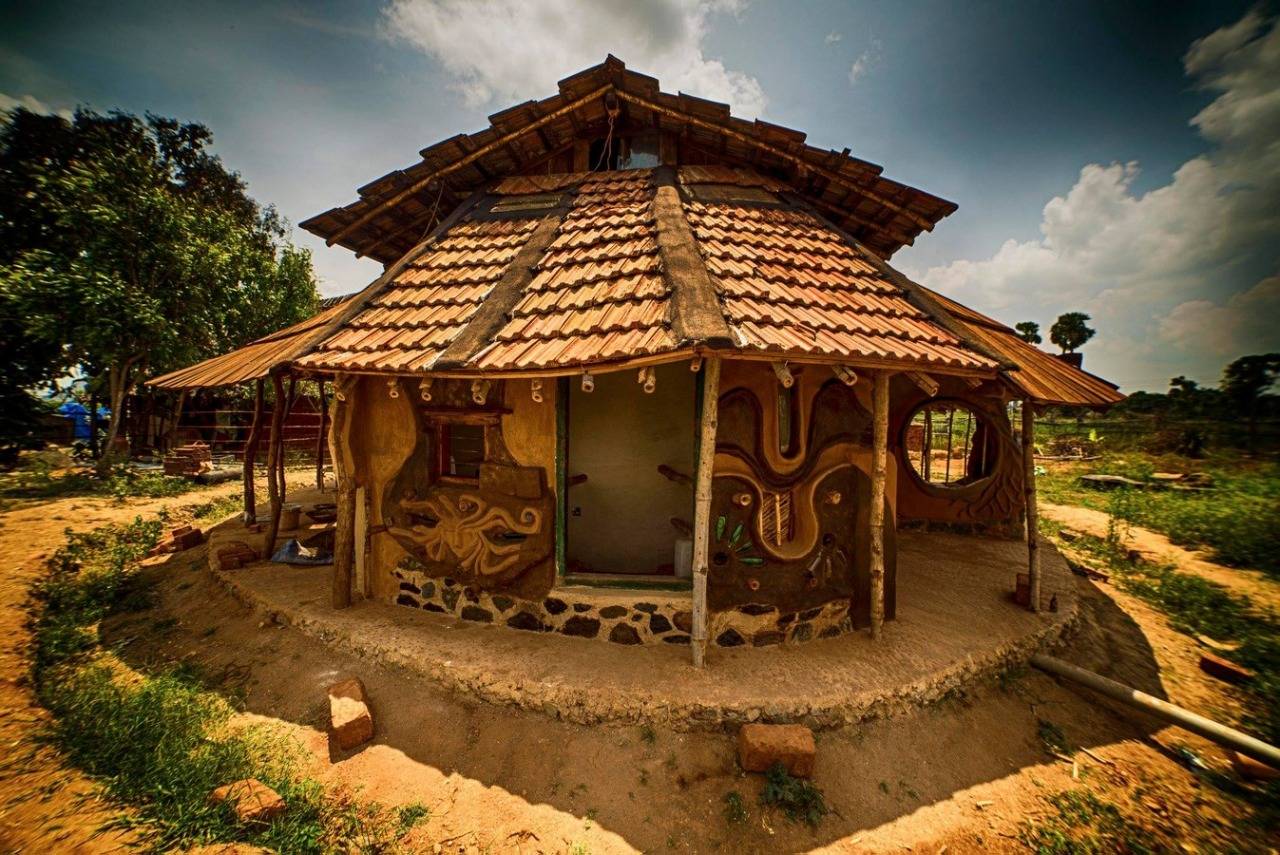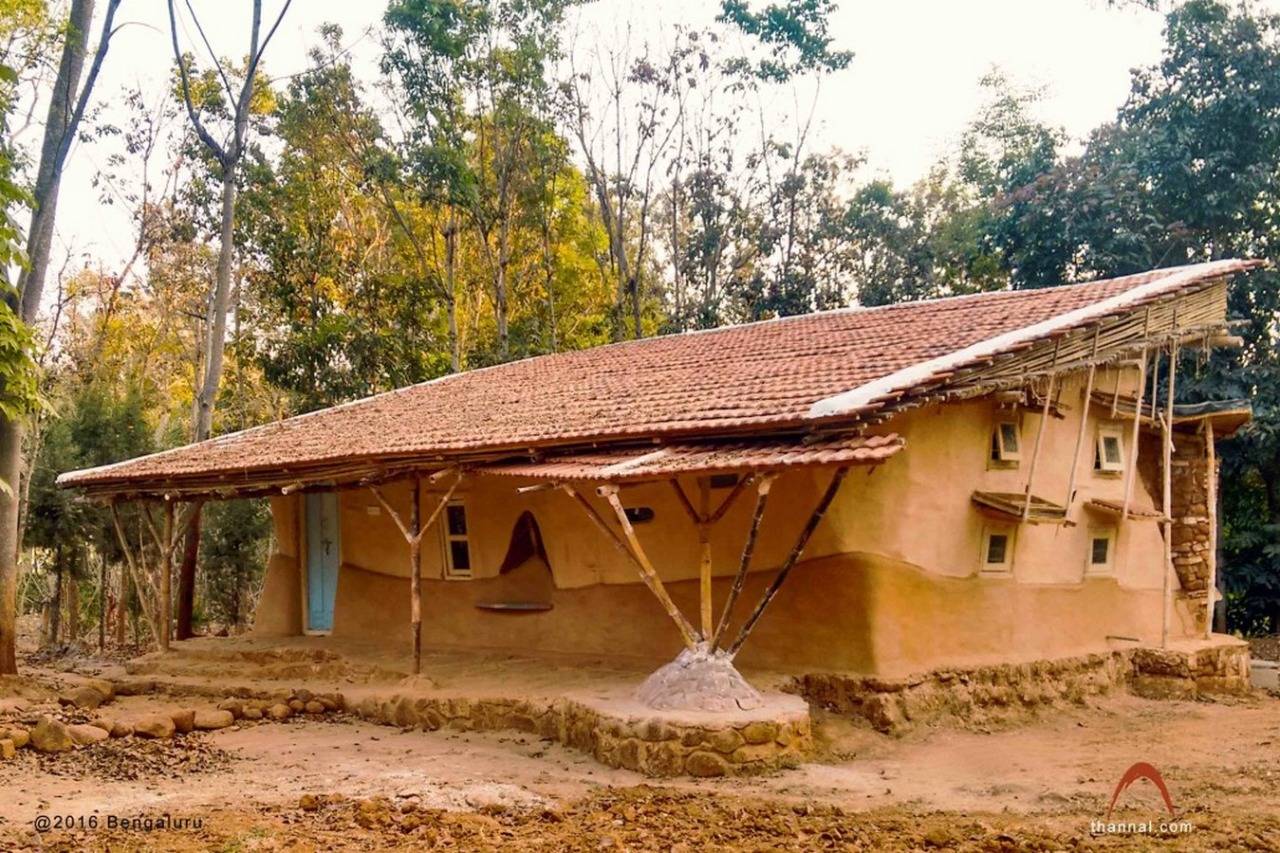Mud House for Modern Living by Thannal Hand Sculpted Homes is the talk of the town

Gone are the days when building with mud was seen as anti-modern, the mud houses designed by Tamil Nadu-based architect Biju Bhaskar, the founder of Thannal Hand Sculpted Homes are the talk of the town when it comes to sustainable living.
In the quest for sustainable architecture and living options, how can we leave mud houses out when it is all one needs, non-toxic, sculptural and most of all it is so beautifully comfortable to live in.
Whether you wish to build a “natural” house in the middle of a chaotic city or in the proximity of nature in a remote area, Thannal will help you build a sustainable refuge with your hands.
According to Biju Bhaskar, who comes from a traditional farming family and trained in wood sculpting at Khajuraho, he completed his architecture degree in 2009 and started Thannal Hand Sculpted Homes in 2011, along with his wife, Sindhu, “Mud buildings are very much similar to the human body. Mud walls, being porous, can breathe, like our skin. This helps in maintaining comfortable indoor temperature, irrespective of extreme weather conditions outside. So one can save a lot of money spent on ACs and other mechanical means to keep the space comfortable.”

Apart from being eco-friendly and naturally cool, the advantage of these houses is that they utilize the locally available resources and labour. The proportion of how much lime, clay, cow dung, among others may vary but as the raw materials are local, they naturally complement the climate, weather conditions of the area, and the needs of the residents.
Talking about the time and cost, a 500 sq feet house for a family may take between two to five months to build but it will certainly not rob you off your capital. Depending on the availability of materials available locally, they have been ab;e to build them, at the cost of Rs 800 to Rs. 1000/- per sq ft. It is very affordable as compared to conventional building costs or so-called “sustainable architecture,” which is even more expensive than conventional architecture (Rs.2500/- to Rs. 3000/- per sq ft.).
Thannal accomplished many projects in Kerela and other states using mud, rammed earth, and split bamboo. Some of them are:
WATTLE & DAUB COTTAGE, BANGALORE, KARNATAKA
A curvilinear, low-height cob wall is layered onto a more rigid, rectangular stone foundation. From these emerge the bamboo framework, filled-in with lattices formed by interwoven split-bamboo fiber and such natural material (wattle). Mangalore tiles serve as the roofing. Athangudi tiles, along with other unused stones on the site are used to create entrancing floor patterns.

A FARMER’S HOME, ATTAPPADI, KERALA
Made with Split Bamboo technique, this is a minimal-budget home, covering an area of around 800 sq ft, built for a displaced farmer and his family consisting of his wife and kids. It is a two-storeyed home built by the owner with the help of volunteers at Thannal, and materials such as mud, bamboo, and stone are all sourced from the site itself. The walls are a combination of both cob, and wattle and daub structures.
SINGING DERVISH STUDIO, TIRUVANNAMALAI, TAMIL NADU
Build within the Thannal precint, this is a 750 sq ft cob structure. Constructed as a “prototype” for a sustainable, low-impact home for farmers. In a heavily mechanized world of cement, and steel structure, it aims to portray “small, dancing spaces.” The materials used are bamboo, mud, and terracotta. Playful niches in the wall combined with mud carvings give it a lively feel. The sifts through the orifices of several shapes cast a spellbinding effect inside.
They refrain from the use of plastic wastes in order to make the homes earthly and more habitable which shall exude the essence of earth and derived nature.
